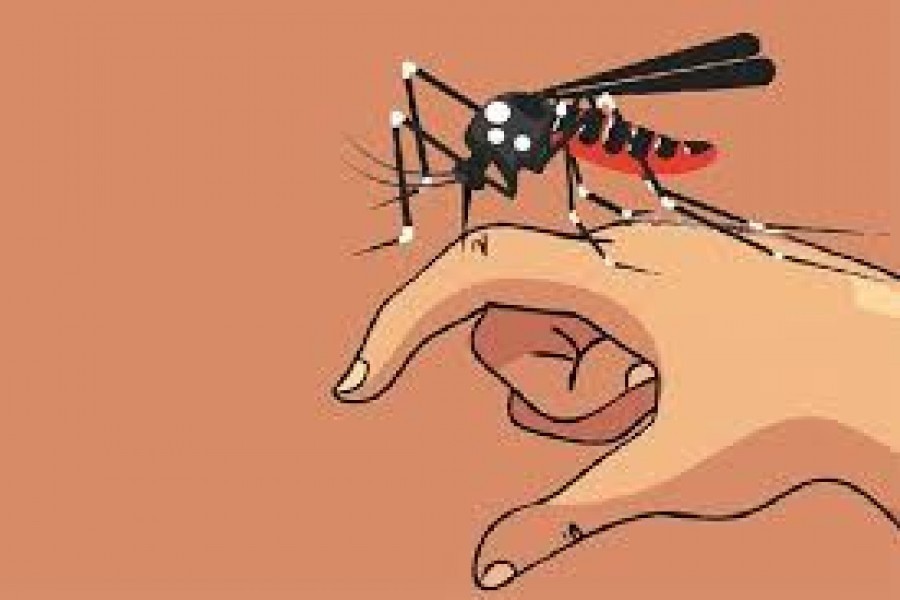Following last year's trend, dengue cases have made their presence announced this year also from many parts of the country. The prevalence, as seen in the past, is highest in Dhaka. With the nation bracing for the second wave of the dreadful Covid-19 pandemic, the Prime Minister intermittently alerting people to it, the looming dengue scourge adds to the overall health-related gloom. In two decades since 2000, its first year of onslaught, the mosquito-borne bone-crushing fever has proved its capability to emerge as endemic to Dhaka. In the following years, the country's other urban areas came under its spell. Thanks to the authorities' all-out intervention, though belated, the ferocity of the disease could be brought under control after its initial rampage.
Despite the alarm and worries it sparked in the last few years, dengue has yet to show few signs of an epidemic. Nonetheless, the disease causes unbearable physical pain and trauma leading to various complications. The haemorrhagic dengue fever is considered a near-fatal type of disease. In the early stage of dengue outbreak in the country, a number of patients died of its haemorrhagic type. That was mainly due to lack of treatment facilities at hospitals coupled with inadequate tools, and dearth of experts. Nonetheless, dengue remained a dread in the following years. Amid the dengue fever remaining a mere yearly and curable malady, the year 2019 emerged as dreadful vis-à-vis the scourge. After a lull for some years, the incidence of cases registers a rise again. Experts term this track of dengue akin to the behaviour of persistent diseases.
In spite of its 2-decade-long off-and-on outbreak in Bangladesh after 2000, dengue is not considered a native fever. The first confirmed case of dengue was identified in 1779-1780. It simultaneously affected Asia, North America and Africa. According to epidemiologists, the strange fever originated in monkeys and transmitted to humans 800 years ago. The disease was initially restricted to Africa and Southeast Asia until mid-20th century. Yet a few large cities in South Asia emerged as dengue hotspots in the last century. Dhaka was not among them. As dengue is passed from person to person by the Aedes Aegypti mosquito, many experts consider it to have been carried by infected persons to the land. Clean rainwater-filled containers are ideal breeding grounds for the Aedes mosquitoes. Thus the eradication of the vector occupies a prime place in all-pronged anti-Aedes, i.e. anti-dengue, campaigns.
The onus lies with the two city corporation authorities in the capital --- Dhaka South City Corporation and Dhaka North City Corporation. After failing miserably in the task of keeping the city clean in the early years of the dengue outbreak, they have lately swung into action. Their relentless efforts notwithstanding, a section of the city dwellers stand in the way of keeping the city clean --- i.e. free of the Aedes mosquito sources. Overfilled dumpsters are still a common sight in Dhaka. Haphazard garbage dumping continues unabated; volumes of the municipal waste, including possible rainwater containers, remain littered on roads. Against such a backdrop, it is increased public awareness and the two city corporations' prompt execution of responsibility which can keep dengue at bay in the face of a threatening return of Covid-19.


